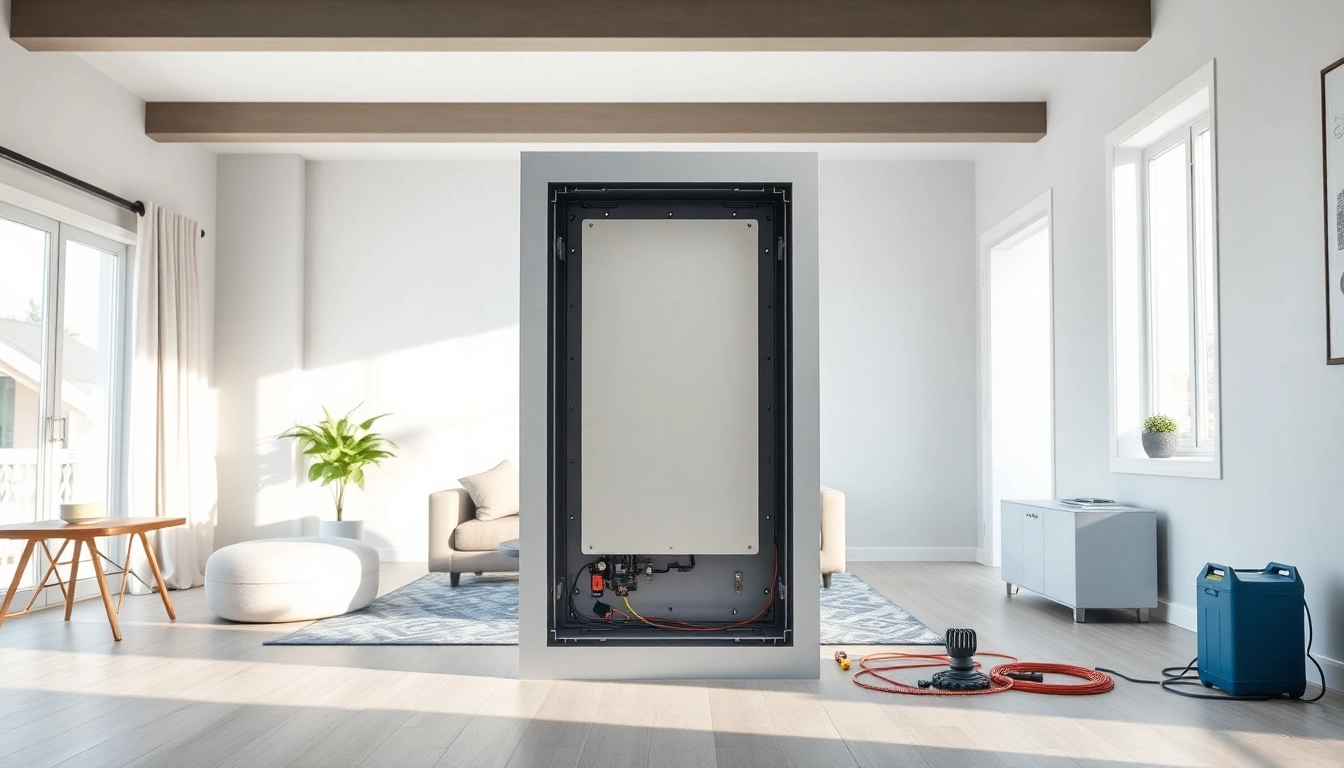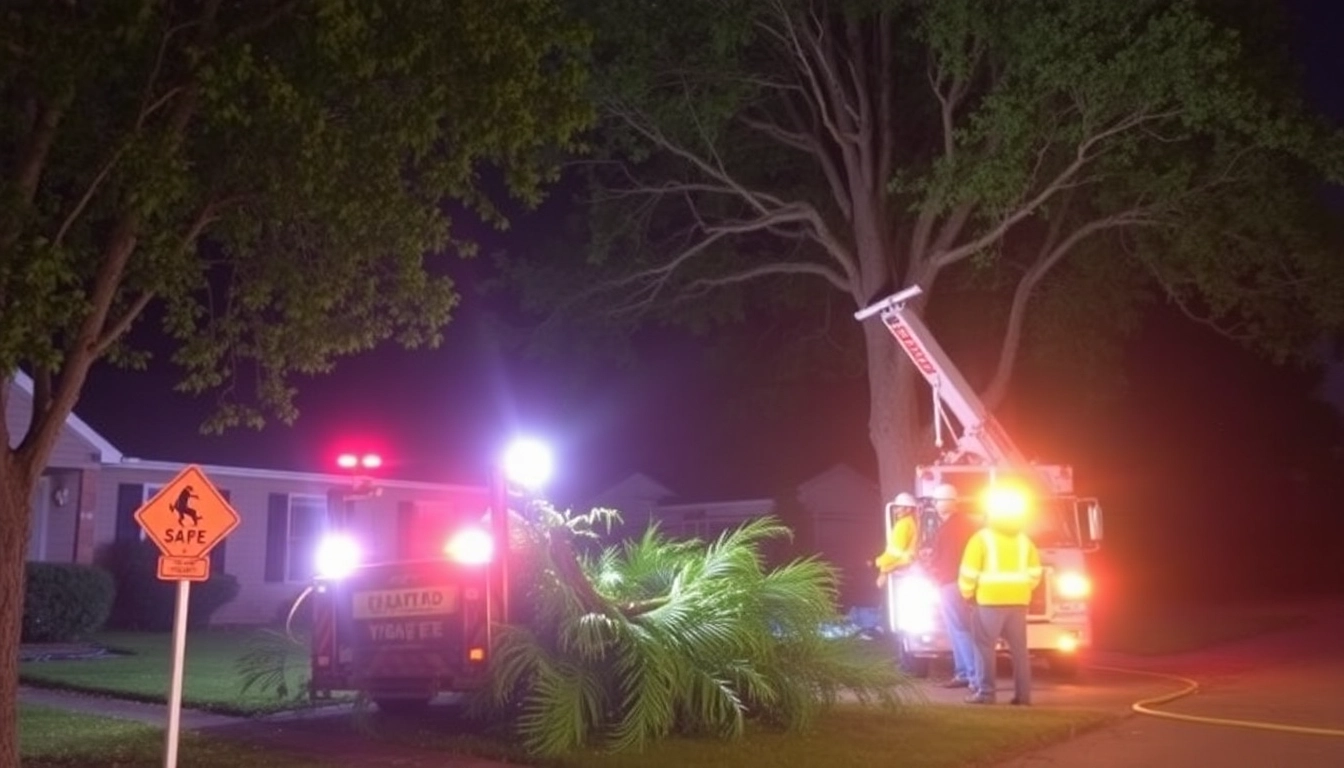Understanding the Electrical Panel: Basics and Functions
What is an Electrical Panel?
An electrical panel, commonly referred to as a breaker box or electrical service panel, is a crucial component of a home’s electrical system. It acts as the distribution point for electrical power, supplying electricity to various circuits throughout the house. The panel receives electricity from the utility company and divides it into manageable circuits, ensuring that the flow of electricity is both safe and efficient. At the heart of any electrical panel are the breakers, which serve as safeguards by interrupting the electrical current during overcurrent or fault conditions.
With the growing demands for electrical power fueled by modern devices and technology, understanding the Electrical Panel is paramount for homeowners. This core element of your electrical infrastructure helps maintain functionality while also ensuring safety. The physical layout typically consists of a metal box containing multiple slots for breakers and fuses, which can be customized based on individual electrical requirements.
The Role of Breakers and Fuses
Breakers and fuses play an essential role within the electrical panel’s framework. Their primary function is to protect the circuit from overloads and short circuits, which can lead to overheating and potentially cause fires. Breakers are designed to trip automatically during these incidences, cutting off the electrical flow and averting disaster. Fuses, although less common in modern systems, serve a similar purpose by melting and breaking the circuit when subjected to excessive current.
In particular, circuit breakers can be reset after tripping, making them more user-friendly and efficient than traditional fuses. Most households will encounter either a standard breaker panel or a combination of standard breakers along with ground fault circuit interrupters (GFCI) or arc fault circuit interrupters (AFCI). The latter two types add extra layers of protection for sensitive areas such as kitchens, bathrooms, and areas where electricity and water may intertwine.
Safety Standards and Regulations
Electrical safety is governed by a series of regulations outlined in the National Electrical Code (NEC), which evolves every few years to adapt to new technologies and safety practices. Local jurisdictions may also impose additional regulations, so it’s imperative to stay informed about the latest requirements in your area. Adequate grounding, proper placement of the panel, and ensuring that the panel is accessible for maintenance are all critical components of compliance.
By adhering to these guidelines, homeowners can vastly reduce the risk of electrical hazards and ensure smooth operation. Regular inspections and updates to the electrical panel not only enhance safety but also improve the efficiency of the entire electrical system in the home.
Signs Your Electrical Panel Needs an Upgrade
Common Warning Signs
The first indicator that your electrical panel requires an upgrade may arise from signs of wear and tear or operational inefficiencies. If you notice frequent tripping of breakers, odd noises emanating from the panel, or a burning smell, it’s time to act. Flickering lights or slow device charging can also signify that your panel is struggling to keep up with demand. Additionally, the age of the panel is a significant indicator—if your system is over 20 years old, it’s worth considering a proactive upgrade to avoid future complications.
Electrical Demand Increases
As families grow and technology evolves, the demand for electricity increases significantly. Households increasingly require power for numerous devices and appliances, from televisions and computers to home theaters and electric vehicles. As electrical demand grows, a panel may struggle to provide adequate electricity, even leading to potential outages if the capacity is exceeded. If your family has added new appliances or if you’ve changed your lifestyle in a way that demands more electricity, it might warrant an upgrade.
Age and Wear of Your Panel
Age is a critical factor when assessing the health of your electrical panel. Older panels, particularly those over 30 years old or that use outdated technologies such as knob-and-tube wiring, are far less efficient and more prone to failure. Moreover, the materials and components of aging panels can deteriorate, leading to rust or damage that exposes wiring to unsafe conditions. Given the general lifespan of electrical panels, which is typically around 20-30 years, it’s essential to evaluate their condition as they approach or exceed this threshold.
Types of Electrical Panels Available
Standard vs. Smart Panels
As the electrical landscape shifts, so too does the technology within electrical panels. Standard panels, suitable for most residential applications, distribute power to various circuits using traditional methods. However, smart electrical panels have emerged, integrating Wi-Fi connectivity and allowing homeowners to monitor and manage energy usage on a level not previously possible. Smart panels provide insights into energy consumption, enabling not only cost savings but also facilitating energy-efficient habits.
They can alert homeowners to issues in real-time and can even allow you to remotely control devices connected to your electrical system, which can be invaluable for energy monitoring and management.
Breaker Panel Options
Breaker panels come in a variety of designs and capacities, typically ranging from 100 to 400 amps. The right choice depends largely on household needs and electrical demands. For smaller units, a 100-amp panel may suffice for basic electrical needs in small homes or apartments. However, large families with multiple high-demand appliances may find that a 200- or even 400-amp service is necessary to support their lifestyle.
When selecting a breaker panel, it’s crucial to consider not only current needs but also future expansion possibilities—installing a slightly larger capacity panel may save hassle and cost in the long run.
Panel Capacity Explained
Understanding panel capacity is integral to choosing the correct electrical panel. Each panel has a specific amperage rating that dictates how much electrical load it can handle safely. Exceeding this rating can lead to overheating and potential fires. When assessing capacity, it’s also critical to understand the load calculations: the sum total of all branch circuit loads within the panel should not exceed 80% of the panel’s capacity for safety reasons.
Engaging a licensed electrician for a load calculation can prevent oversizing or undersizing issues, ensuring that the new panel meets the household’s demands effectively.
Steps to Upgrade Your Electrical Panel
Hiring a Licensed Electrician
The process of upgrading an electrical panel is complex and must comply with local codes and safety regulations. Therefore, hiring a licensed electrician is essential. Professionals possess the training, knowledge, and experience necessary to handle the intricacies of electrical systems safely. They can advise you on the best panel options for your specific needs and ensure that all work adheres to current electrical codes.
Choosing the Right Panel
Once you’ve decided to upgrade, the next step is selecting the right panel for your home. Consider your current and future electrical needs and evaluate options by comparing brands, features, and ratings. Popular brands like Square D or Siemens offer varying options tailored to residential needs. Ensure to also explore warranties, compatibility with existing electrical systems, and the potential for smart integration.
Permitting and Inspections
Before undertaking any electrical work, securing necessary permits is crucial. Most local jurisdictions require permits for major electrical system modifications, including panel upgrades. Once the panel is installed, a city inspector will usually conduct a safety inspection to ensure all work aligns with local building codes and standards. Proper documentation of these permits and inspections can be beneficial, particularly for future property transactions.
Cost Considerations for Electrical Panel Upgrades
Budgeting for Your Upgrade
The costs associated with upgrading an electrical panel can vary significantly based on several factors, including the new panel type, labor costs, and any additional work needed to bring the electrical system up to code. On average, homeowners can expect to pay between $1,500 to $3,000 for a panel upgrade, but these prices can be higher depending on the specific situation and requirements.
Helping Hands: DIY vs. Professional Installation
While DIY enthusiasts may feel tempted to handle their electrical panel upgrade, this aspect of home improvement generally requires professional knowledge for safety and compliance reasons. While you might save on labor by doing it yourself, the potential risks involved can far outweigh these savings, not to mention the possibility of voiding warranties or facing fines if work is not compliant with local codes. Employing a professional often provides peace of mind knowing that the project is completed safely and correctly.
Long-term Savings vs. Initial Costs
Though the upfront costs of a panel upgrade can be daunting, it’s essential to consider the long-term benefits. An upgraded panel can improve energy efficiency, minimize the risk of power outages, reduce the likelihood of fire hazards, and ultimately lead to lower energy bills through optimized energy usage. Investing in this critical part of your home not only boosts safety but can enhance property value should you decide to sell in the future.


